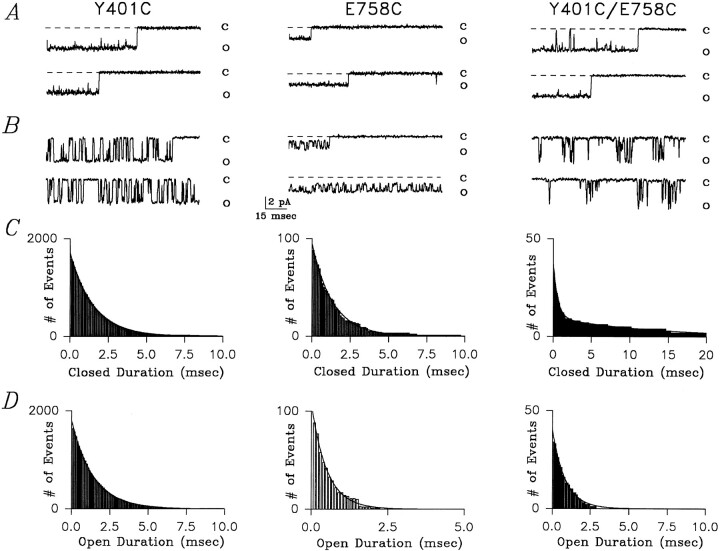Figure 5.
Single-channel recordings of Y401C, E758C, and reduced Y401C/E758C mutant channels following fenvalerate application at −80 mV. (A) Currents recorded in Y401C, E758C, and Y401C/E758C channels in the presence of 10 μM fenvalerate which is added to maintain the channels in the open state for tens to hundreds of milliseconds. (B) Currents recorded in Y401C and reduced Y401C/ E758C mutants channels with 5 μM extracellular Cd2+ and in E758C channels with 400 μM Cd2+. Cd2+ caused full closures of the Y401C and Y401C/E758C channels while blocking E758C channels to a sub-conductance level (closed level indicated by the broken line). In the presence of 5 μM Cd2+ the double-mutant channel Y401C/E758C displayed bursts of short-lived blocking events separated by long-lived blocking events not seen in either single-mutant. These long-lived blockages likely represent the “trapping” of the Cd2+ ion as a result of simultaneous interactions with the two free sulfhydryl groups. (C) The mean block-time histograms are shown for the channels illustrated in A for Y401C, E758C, and Y401C/E758C channels. The blocked-time histograms could be adequately fit using a mono-exponential equation for Y401C and E758C channels, while a bi-exponential function was required for Y401C/E758C channels. Note: the time axes are different in the different panels. See text for further details. (D) The mean unblocked-time (i.e., open-time) histogram is shown for the same channels illustrated in B. For Y401C, E758C, and Y401C/E758C channels the unblocked-time histogram could be adequately fit using a mono-exponential function.

